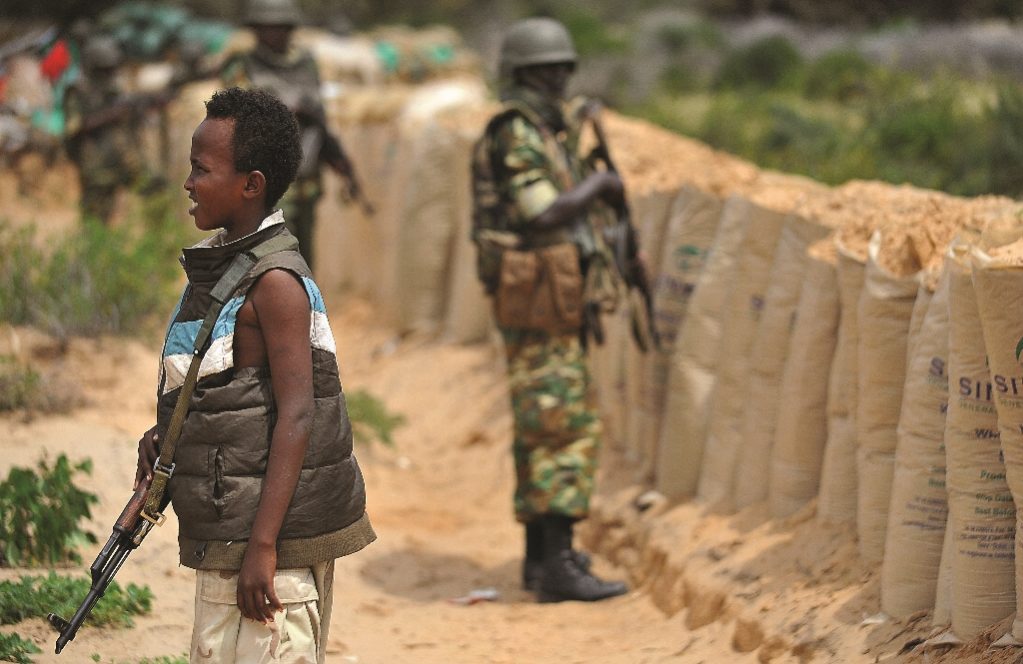There are many conflicts in Somalia, not just Al-Shabaab vs the good guys. Clan fights probably top the list.
“Let me explain some of what I do,” a peacemaker tells me over lunch at the heavily fortified Jazeera Hotel in Mogadishu.
“You see there are these two clans, ve-ery important,” he says, stretching the ‘very’ as Somalis are apt to do. “The Dir, and the Maheran.”
Soft spoken, more of an academic than a fighter, he spoons the traditional green grated hot chili mixture into his soup.
Ibrahim Mohamed works on conflict transformation for the Zamzam Foundation.
“These two clans have been fighting, and I have been going there for two years, trying to get them to talk. I have one man from each clan who accompanies me, but at first only to an imaginary line in the sand, he will go no further.”
We are talking of a remote area called Galguduud, and then of an even more remote area called Inagebeli in central Somalia. The latter is an area where there is no cellphone reception, an important consideration when you are sitting under a tree trying to make peace between two warring clans.
“Eventually,” Ibrahim says, pushing his spectacles up his nose, “I get one clan to accept the other clan’s man coming with me all the way, after promising the man that he will be safe, telling him if he is killed I will be killed too.”
“So we meet, and then one clan leader agrees to go with me to the other clan, a big step, and then the other clan leader comes to his clan without me, which is a good sign.”
Now we are into negotiations. In a war between the clans some 15 years ago, 20 more Maheran died than Dir. But if you calculate things only after the war, 12 more Dir died in those past 15 years. Each side calculates from the date that suits them.
Restitution for the balance is at an agreed 100 camels per person. Plus you must return the killed person’s weapon, and the weapon with which he or she was killed.
“Of course you don’t have to pay that. There is the 30 percent forgiveness factor, so you only pay 70.”
Naively I ask: “So the family get 70 camels, or AKs?”
“Oh no. No, no, no. Only 10 percent goes to the family, the clan gets the rest.”
So seven for the family, 63 for the clan?
“No. It is calculated on the original amount, so 10 for the family.”
For each one killed in excess of those killed on the other side?
“Yes. Unless it is a woman or a girl of course.”
Huh?
“They are only worth 50 camels, minus the 30 percent.”
So girls are worth camels, men worth AK47s?
“No, no, no. An AK is worth $1,200, and a camel is worth the same. So in my negotiations I have asked if we can swop the AKs for camels to exact retribution. So far they have not accepted this.”
What if the UN bought the camels and paid everyone at 70 camels per deficit?
“No good. The killer’s family must feel the pain.”
This negotiation style is 2,000 years old in Somalia, so to change things is difficult.
Who is the ‘they’ I ask him.
“The elders. We sit under a tree, clan elders at the back, behind them the women. Last time I went, we hoped to conclude in two days, but we were there for two weeks. During this time, they slaughter animals daily to feed everyone. And provide water in a tanker every day.”
How many people?
“About 400, more or less, with the women.”
And did you get a resolution?
He sighs. “No. We are still talking. We cannot get around the problem of 12 for one side and 20 for the other.”
Like most Somalis, he is confident the country is on the up and up.
There is still the small matter of defeating Al-Shabaab. And there are not enough camels even in Australia to do that. Guns might. Somalia is counting on it.
